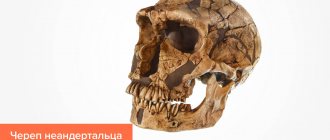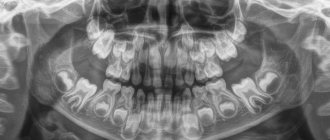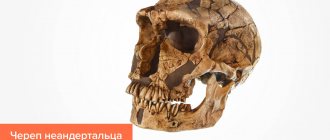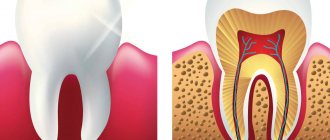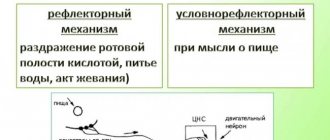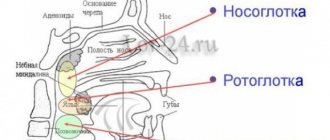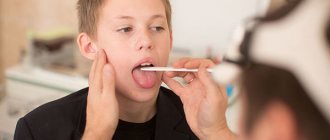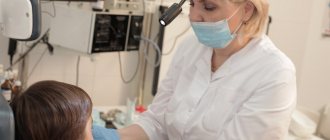53101
Crooked, unhealthy teeth can ruin the appearance of an otherwise attractive person. Oral health is important not only for our attractiveness, because the main function of teeth is to grind food. The condition of the stomach and intestines depends on this, which directly affects health and life expectancy .
Teeth of ancient people
The dentofacial apparatus of prehistoric and modern humans differs significantly. Ancient people had more than 36 teeth, protruding fangs and a massive jaw. This was explained by the need to chew rough food and raw meat. With the addition of thermally processed foods to the diet, the dentition began to change. The canines were the first to transform, becoming aligned with the bite line. Then the jaw arch narrowed, the interdental spaces disappeared, and the teeth themselves decreased in size. Currently, 32 teeth in humans are the norm, but third molars are considered to be an atavism.
Interesting fact!
The teeth of ancient man cannot be called aesthetic, but they were healthy. According to scientists, cavemen never suffered from caries and other oral diseases.
Diagnostics
The main goal of any diagnosis is to identify the cause of the problem. And make a diagnosis. Likewise, the diagnosis of distal occlusion is designed to identify the cause of closure in the second class. In order to separate the flies from the cutlets during treatment, so to speak. That is, dental causes of closure are in the second class from non-dental (maxillary, skeletal).
The main diagnostic methods are:
- Analysis of TRG (teleradiogram) of the skull in a lateral projection. It allows you to clearly determine all the skeletal (jaw) nuances of the problem. Both with the position of the jaws and with their sizes.
- Analysis of plaster models of jaws (for this, casts are taken). It allows you to clarify the “dental” nuances: the size of the teeth, the length and width of the dentition, the features of the relationship (including closure) of the upper and lower teeth
Analysis of TRG (teleradiogram) of the skull in a lateral projection.
Analysis of plaster models of jaws.
It is not recommended to fall below this diagnostic “bar”. Below - just by eye. But this, as we understand, is not the best option.
Diagnostics is the first and key step in the treatment of distal occlusion. Do you want to know why it’s impossible to do without diagnostics?
Name of human teeth
Depending on the location and structure, dental units have their own functional characteristics and are called differently.
- Incisors.
On both jaws there are four front teeth in humans - medial and lateral incisors, which are used for biting food. - Fangs.
Sharp teeth designed for chewing hard foods. - Premolars.
"Fours" and "fives" on the left and right sides of each jaw arch grind soft or small pieces of food. - Molars.
Three large outer teeth in each row are aimed at grinding coarse substances. - The canines
and incisors are part of the anterior group, or the “smile zone,” and the human molars are part of the chewing segment.
In addition, teeth are divided into temporary and permanent. In the first case, we are talking about dairy products that appear in children from the fifth month of life to three years. The second refers to the final bite, which is formed between six and thirteen years of age. Milk teeth differ from permanent teeth only in size, but in structure they are identical.
How to form?
photo: diagram of the correct bite in a person
What do orthodontists advise to form the correct position of teeth:
- Breastfeeding is very important for a child; it lays the foundation for the correct development of the jaws.
If you had to feed your child with formula, it is best to purchase a pacifier that does not spoil the bite. The sucking hole should be made narrow so that the baby has to suck with effort. The lower jaw in infants is underdeveloped and muscle exercises (forceful sucking) are important for its proper functioning in the future. - Formation of correct chewing habits. You should not accustom your baby to a pacifier. From the moment of teething, the baby should be offered complementary foods for the habit of proper chewing.
- Parents should pay attention to how their child breathes. Physiological breathing through the nose. Breathing through the mouth is a sign of ENT diseases. They must be treated: in addition to general damage to health, this is a dangerous factor in the formation of a defective bite.
- From the moment of complete eruption of baby teeth, regular examinations by an orthodontist (every six months). When abnormalities are diagnosed at an early age, they are much easier to treat.
How many teeth does a person have?
The number of teeth a person has depends on age and anatomical features. The child has a set of 20 primary teeth, which are replaced by a permanent bite of 28 teeth. Third molars erupt, as a rule, after twenty years or do not grow at all, which is not a pathology.
In dentistry, a single numbering of human teeth is adopted. Doctors classify teeth as lower and upper and distinguish the right and left segments of the jaws. Each of them includes two incisors, a canine, two premolars and three molars. The countdown starts from the first front tooth and ends, accordingly, with a figure eight. Sometimes a number is added to the serial number indicating the location zone. For example, the right canine of the top row is numbered 13. This order in the schematic representation is called the formula of human teeth.
Polyodontia
In rare cases, an anomaly such as polyodontia is observed - supernumerary, or extra teeth in a person. Dental units can appear in the primary and permanent dentition anywhere in the jaw, separate from or fused with the main teeth. The defect affects not only the aesthetics of the smile, but also leads to the formation of incorrect occlusion, impairs the quality of chewing food and diction. Most often, supernumerary teeth are removed in childhood or built into the dentition.
Edentia
There is also a deviation of the opposite meaning called edentia - congenital or acquired absence of dental units. The causes of the phenomenon include heredity or improper development of the embryo in the womb. People without teeth cannot fully eat and speak, have a deformed facial contour and weakened immunity.
Dimensions of human teeth
The upper central incisors are twice as wide as their antagonists. The remaining dental units of the same name have approximately equal parameters. The size is determined using special tables with the optimal size and permissible deviations. Experienced doctors calculate proportions by dividing the length of a person’s teeth by the width. A result of about 0.75 millimeters is considered close to ideal. For more detailed diagnostics, other professional formulas and techniques are used.
Size deviations from the norm occur due to improper formation of the jaw, fusion of tooth buds, or genetic predisposition. Teeth that are too large are called macrodentia, and abnormally small teeth are called microdentia. Pathologies are accompanied by problems with bite and chewing functions, but can be successfully corrected by a dentist.
Interesting fact!
The longest tooth in the world belongs to an Indian teenager. The size of its crown is almost four centimeters. About a year ago, the tooth was removed, and the young man was included in the Guinness Book of Records.
The structure of the human tooth
Anatomy
From an anatomical point of view, a human tooth consists of three parts.
- Crown.
The visible part protruding above the gum. It has four sides: the occlusal, or cutting edge, in contact with the antagonist teeth; contact wall adjacent to adjacent dental units; vestibular and lingual surfaces facing the lips and tongue, respectively. - Root.
Fixed in the socket by connective tissue, located in the recess of the jaw. As a rule, premolars have two roots, and molars have three, four or even five. The remaining dental units have one root canal. - Neck.
It is located between the coronal part and the root of a human tooth, surrounded by periodontium.
Histology
What are human teeth made of? Let's look at the cross-section of the structure of a human tooth.
- Enamel.
A transparent protective coating of the crown, almost entirely consisting of inorganic microelements. - Dentine.
The hard base of the tooth, containing 80% mineral components and 20% organic substances. The shade of dentin is responsible for the color of dental units, as it shines through the enamel. - Cement.
The bone tissue covering the tooth root. Plays the role of a fastening element connecting the tooth to the alveolus. - Pulp.
Soft tissue filled with bundles of nerves and capillaries. Painful sensations during caries are explained precisely by the presence of nerve endings.
Upper jaw
The upper jaw (in Latin - maxilla) occupies a central place among the bones of the facial part of the human skull. This bone structure has a complex structure and performs a number of vital functions.
INTERESTING : As their work activity developed, ancient people transferred some of the grasping functions from the jaw to their hands. As a result, the size of this bone structure has decreased significantly
Functions and purpose
The upper jaw bone performs a number of important functions. Below is a description of some of them:
- Shape-forming. Forms the nasal and eye cavities, the partition between the mouth and nose.
- Aesthetic. The size and shape of this bone will determine the oval of the face, the setting of the cheekbones, and the external attractiveness of a person.
- Respiratory. Forms an extensive maxillary sinus, in which the inhaled air is moistened and heated.
- Chewable . The teeth located on the jaw ensure chewing of the food consumed.
- Swallowing . The muscles and ligaments involved in the process of swallowing food (including the tongue) are attached here.
- Sound-forming. Together with the lower jaw and air sinuses, it takes part in the formation of various sounds. When this bone structure is damaged, a person’s diction is impaired.
IMPORTANT ! During the day, a person makes about 1.4 thousand chewing movements. When chewing bread, the jaw experiences a pressure of 15 kg, fried meat - 25 kg, maximum pressure - 72 kg
Structural features
The upper jaw bone has a complex structure. It consists of several segments and processes, shown in the following picture.
Below we will consider how the body of the jaw bone is structured and how many interconnected surfaces it consists of.
Jaw body
The anterior surface , located under the infraorbital margin, has a slightly curved shape. On it you can see the infraorbital foramen and the canine fossa.
The posterior surface consists of a tubercle and several alveolar openings for nerves and vessels. Next to the tubercle is the palatine groove.
The orbital surface consists of the lacrimal notch and the infraorbital groove, which passes into the infraorbital canal.
The nasal surface and the anterior surface are isolated from each other by the nasal notch. The main part of the nasal surface consists of the maxillary cleft.
REFERENCE : The fixed upper jaw bone is stronger than the movable lower one. Together with other bone structures of the skull, it protects the brain from injury and bruises.
Processes
The palatine process occupies a significant area of the hard tissues of the palate. It is connected to the second process, located on the opposite side, using a median suture.
The frontal process with its upper side is attached to the nasal region of the frontal bone, its anterior side to the new bone, and its posterior side to the lacrimal bone. The lower edge of the process connects to the body of the jaw. The process has a lacrimal groove and a ethmoidal ridge.
The zygomatic process begins at the outer upper corner of the body and has a lateral location. The upper part of the zygomatic process is adjacent to the frontal bone.
The alveolar process is a bone formation with a complex structure. It includes walls, dental alveoli, interdental and interradicular bone septa.
Mounds
The infratemporal part of the jaw has a convex shape. Its most prominent area is called the “maxillary tubercle” (in Latin - tuber maxillae). At the base of the tubercle there are alveolar openings for blood vessels and nerves. The oblique head of the pterygoid lateralis muscle is attached to the maxillary tubercle.
In international practice, the following abbreviations are used to designate tubercles: PNA (according to French nomenclature), BNA (according to Basel nomenclature) and JNA (according to Jena nomenclature).
Features of blood supply
The maxillary internal artery, or rather its four branches, is responsible for the blood supply:
- posterior superior alveolar;
- infraorbital;
- descending palatine;
- nasopalatine (see the following diagram).
The following table shows which areas the listed vessels supply blood to.
Blood supply to the maxillary bone
| Arteries | Areas to which blood is supplied |
| Posterior superior alveolar | Gums, teeth, alveolar process, mucous membrane of the maxillary cavity, bone walls (posterior, lateral) |
| Infraorbital | Inferior orbital canal, orbit, anterior gums, teeth |
| Descending palatine | Hard palate, pterygopalatine canal, soft palate and surrounding tissues |
| Nasopalatine | Nasal cavity, incisive canal, posterior parts of the nasal septum |
The venous network, which is responsible for the outflow of blood, does not always follow the pattern of the supply vessels. It is represented by parallel veins and venous plexuses. From the pterygopalatine ganglion, blood flows into the maxillary vein, and from there into the external jugular vein. From the plexus of the alveolar process it enters the facial vein, and then into the internal jugular vein.
Teeth
When studying the anatomy of the human upper jaw, one should dwell in more detail on the structure of the teeth. This bone structure contains incisors, canines, premolars and molars.
Below is a brief description of the structure of the teeth of a normal, healthy human upper jaw.
Teeth located on the human upper jaw
| Tooth name | Tooth shape | Number of tubercles | Root structure |
| Central incisor | Chisel-shaped | 3 | Single, cone-shaped |
| Lateral incisor | Chisel-shaped | 3 | Flattened from center to edge |
| Fang | Pointed | 1 | Single, powerful |
| First premolar | Prismatic | 2 | How many tubercles, so many roots |
| Second premolar | Prismatic | 2 | Cone-shaped, compressed front and back |
| First molar | Rectangular | 4 | With three branches |
| Second molar | Cubic | 4 | With three branches |
| Third molar | Cubic | 4 | Short, powerful |
Despite the fact that teeth differ in types (types) and shapes of crowns and roots, their internal structure is the same.
Diseases and pathologies of the upper jaw
Inflammatory processes in the oral cavity can provoke the appearance of cysts on the human jaw - hollow tumors filled with fluid. Cysts are treated in several ways, but surgery is considered the most successful. More information about the treatment of cysts can be found in the article “Treatment of jaw cysts: radicular, follicular, odontogenic and others.” Bone inflammation can lead to osteitis, periostitis or osteomyelitis, the characteristics of which are presented in the following table.
Inflammatory diseases of the human maxillary bone
| Name | a brief description of |
| Osteitis | Bone damage |
| Periostitis | Inflammation of the periosteum |
| Osteomylitis | Bone marrow inflammation |
Periostitis can occur in fibrous, purulent or serous forms, and osteomyelitis - in acute or chronic forms. The listed diseases can cause odontogenic sinusitis - a disease associated with the penetration of infection into the maxillary sinuses.
Among malignant formations of this bone structure, tumors of epithelial origin predominate.
Human wisdom teeth
A “wisdom tooth” is the third outer molar with three to five roots. In structure it is no different from its “neighbors”. To the question “How many wisdom teeth does a person have?” cannot be answered unambiguously. They erupt around the age of twenty, one on each side of both jaws. However, there are people without wisdom teeth. This is a variant of the norm, since in the process of human evolution the need for the “eight” disappeared, and the structure of the jaws underwent corresponding changes. Today, third molars are considered a vestigial organ.
